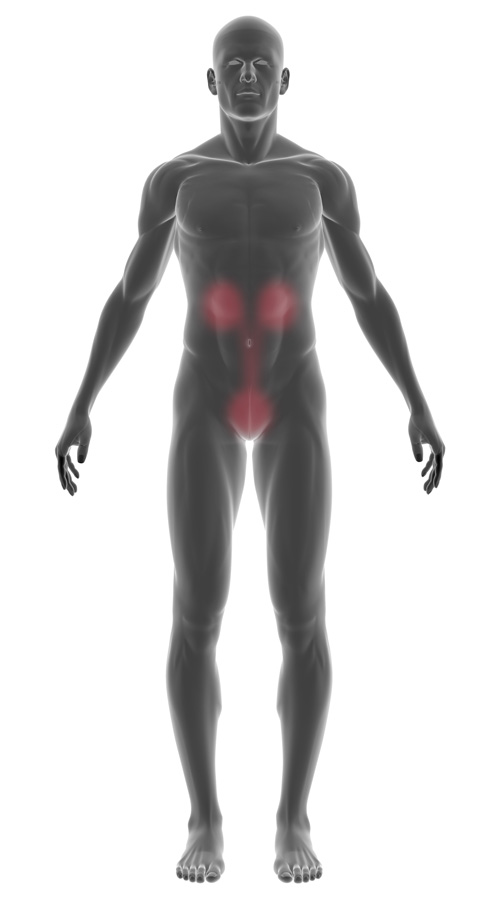Benign prostate enlargement
Incidence and causes
Progressive enlargement of the prostate is part of the ageing process. This enlargement is a consequence of the growth of prostate glands, a process that is strongly influenced by male sex hormones. Depending on how much the gland grows, some men develop symptoms caused by compression of the part of the urethra that passes through the prostate. This causes increased resistance to the flow of urine through the urethra. This resistance can lead to incomplete bladder emptying so that residual urine is left in the bladder. This benign enlargement of the prostate usually occurs around the end of the fifth decade of life. Roughly one third of these men will develop symptoms and about 10% of patients will eventually need to have an operation to relieve the symptoms.
Symptoms of benign prostate enlargement
Benign prostate enlargement can have an influence on urination because the enlarged prostate presses on the area where the urethra exits the bladder. The symptoms can affect urination in a variety of ways:
How urine is stored in the bladder (urine storage):
- Need to urinate more often than usual
- Increased, night-time urination
- Sudden urge to urinate and difficulty holding on
- Involuntary emptying of the bladder
Nature of urination (emptying the bladder):
- Weak stream of urine
- Stream of urine split or spraying
- You need to push to urinate
- It takes longer for urine to start flowing
- You take longer than usual to urinate
- In rare cases, acute or chronic retention of urine
Sensation after urinating (post-micturition)
- Feeling that you cannot empty your bladder completely when urinating
- Involuntary loss of urine or dribbling shortly after leaving the toilet
Diagnosis
This is usually done by the doctor, based on your medical history and examination of the prostate by a digital rectal examination. A urologist will confirm the situation by measuring the urine flow and finding out whether there is any residual urine. As a rule, the symptoms and the stress of the condition are assessed using the International Prostate Symptom Score (IPSS) questionnaire.
Treatment options
Conservative treatment is the rule in the early phase. Simply monitoring the development of symptoms on a regular basis will, depending on the symptoms, lead onto drug treatment. These drugs usually produce a moderate improvement in the situation and are covered by health insurance schemes (Switzerland).
(Link Treatment of benign prostate enlargement: https://patients.uroweb.org/treatments/bpe/).
More aggressive treatment should be given for more advanced stages of the condition. This means active involvement of a urologist, who will propose electrical or laser-assisted resection of the prostate through the urethra or thermal therapy, which is recommended more for medium-sized to large glands.


